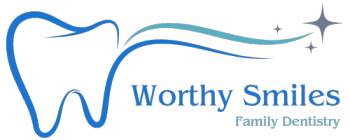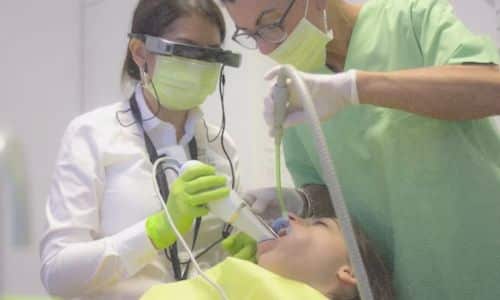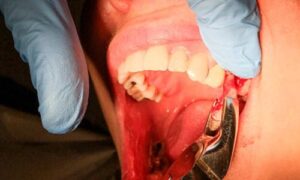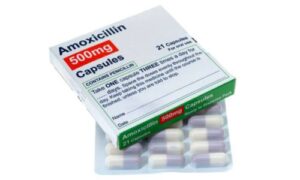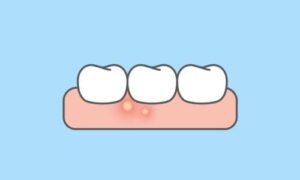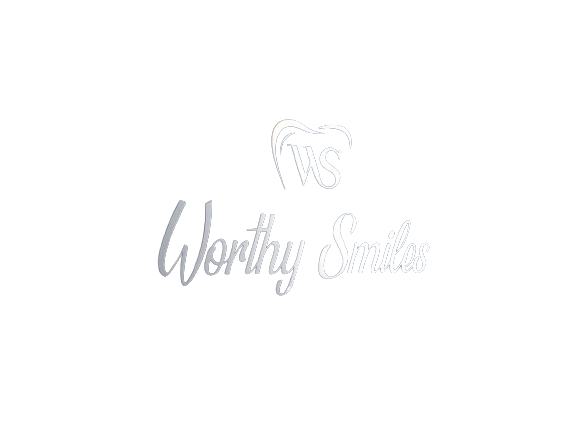Introduction
Laser dental treatments have revolutionized the landscape of oral healthcare, offering a cutting-edge alternative to traditional surgeries. These advanced procedures utilize focused beams of light to target and treat specific areas in the mouth, resulting in reduced pain, faster healing times, and minimal bleeding. With their precise and efficient nature, laser treatments have quickly become a preferred choice for both patients and dentists alike. In this comprehensive guide, we delve into the myriad ways in which laser dental treatments surpass regular surgeries.
Understanding Laser Dental Treatments
Laser dental treatments, harnessing the power of advanced laser technology, have emerged as a transformative approach to addressing various oral health issues. These treatments utilize focused light beams to target and treat specific areas precisely, presenting a host of advantages over conventional surgical methods. One major advantage of laser treatments is their ability to minimize pain and discomfort during and after the procedure. The focused light beams used in laser treatments are less invasive than traditional surgical tools, resulting in reduced bleeding, swelling, and the need for anesthesia. Additionally, laser dental treatments often promote faster healing times and can minimize the risk of infection due to their precise and targeted nature.
The Advantages of Laser Dental Treatments
Leser dental extends beyond pain reduction and includes reduced bleeding, swelling, and the need for anesthesia. Furthermore, laser treatments promote faster healing times and minimize the risk of infection due to their precise and targeted nature. Additionally, the use of lasers in dental procedures allows for more conservative treatment options, preserving more of the natural tooth structure compared to traditional methods. Explore the distinct advantages that make laser dental treatments a superior choice compared to regular surgeries.
1. Precision and Accuracy
Laser dental procedures offer unparalleled precision, allowing dentists to target specific tissues without affecting surrounding areas. This not only reduces the risk of damage to healthy tissue but also ensures more accurate and successful treatment outcomes. Moreover, the use of lasers in dental procedures minimizes the need for incisions and sutures, leading to faster healing times and reduced post-operative discomfort for patients. This precision minimizes damage to healthy tissues, resulting in quicker healing times.
2. Reduced Discomfort and Pain
Compared to traditional surgeries, laser dental procedures are associated with less discomfort and pain. This is because lasers cauterize blood vessels as they cut, reducing bleeding and swelling that can contribute to post-operative pain. Additionally, lasers can target specific areas with precision, minimizing trauma to surrounding tissues and nerves that can cause pain during recovery. The accuracy of lasers minimizes trauma to tissues, leading to a more comfortable experience for patients during and after the procedure. In addition to reducing discomfort and pain, laser treatments also offer faster healing times compared to traditional surgical methods. The precise nature of lasers allows for minimal scarring and promotes quicker tissue regeneration, resulting in a smoother recovery process for patients. Overall, the use of lasers in medical procedures not only enhances patient comfort but also improves the overall outcome of the treatment.
The dental Lasers Market size is estimated to reach $321.5 million by 2027, growing at a CAGR of 5.4% during the forecast period 2022-2027.
3. Faster Healing Process
The minimized damage to tissues and reduced post-operative discomfort contribute to a faster healing process with laser dental treatments. The use of lasers in dental treatments promotes speedier healing by stimulating the production of collagen, a protein that plays a crucial role in tissue repair. This accelerated healing process allows patients to recover more quickly and resume their normal activities sooner. Patients often experience shorter recovery times compared to traditional surgical methods. In addition, laser dental treatments also minimize the risk of infection as the high-energy beams sterilize the treatment area. This further enhances the healing process by preventing any potential complications that may arise from infections. Overall, the use of lasers in dental treatments not only speeds up recovery but also ensures a safer and more comfortable experience for patients.
4. Minimal Bleeding and Swelling
Laser dental treatments are characterized by minimal bleeding and swelling, enhancing patient comfort and reducing the risk of complications. The laser’s precision allows for targeted treatment, minimizing damage to surrounding tissues and reducing the amount of bleeding during the procedure. Additionally, the laser’s ability to seal blood vessels as it works further reduces bleeding and swelling, resulting in a more comfortable experience for patients. The coagulating effect of lasers promotes a controlled and bloodless environment during the procedure. This restrained and bloodless environment not only improves visibility for the surgeon but also reduces the risk of infection. Furthermore, the use of lasers in surgical procedures often leads to faster healing times and less scarring compared to traditional methods.
5. Reduced Need for Anesthesia
The precision of laser technology often reduces the need for extensive anesthesia during dental treatments. This is particularly beneficial for patients who may be sensitive or allergic to traditional anesthesia. In addition, the use of lasers in dentistry can also minimize the risk of potential side effects associated with anesthesia, such as nausea or drowsiness. This allows patients to recover faster and resume their daily activities without any lingering effects from anesthesia. This can lead to faster healing and reduced post-operative discomfort for patients. Additionally, the use of lasers can often eliminate the need for sutures or stitches, further enhancing the overall patient experience and reducing recovery time.
The global dental laser market size was USD 241.74 Million in 2021 and is expected to register a revenue CAGR of 8.2% over the forecast period.
Comparative Analysis: Laser Treatments vs. Regular Surgeries
1. Precision
- Laser Dental Treatments: High Precision
- Laser technology allows for focused and precise targeting of specific oral tissues, minimizing damage to surrounding areas.
- Regular Surgeries: Variable Precision
- Traditional surgical methods may have variable precision, leading to a potential impact on adjacent tissues. This can result in a longer recovery time and increased risk of complications. Additionally, the precision of laser dental treatments allows for more accurate and effective treatment outcomes.
2. Discomfort and Pain
- Laser Dental Treatments: Low Discomfort and Pain
- The precision of lasers minimizes trauma to tissues, resulting in a more comfortable experience for patients during and after the procedure.
- Regular Surgeries: Moderate to High Discomfort and Pain
- Traditional surgeries may involve more extensive tissue disruption, leading to varying levels of discomfort and pain.
3. Healing Process
- Laser Dental Treatments: Faster Healing Process
- Minimized damage to tissues and reduced post-operative discomfort contribute to a faster healing process.
- Regular Surgeries: Longer Healing Process
- Traditional surgical methods may result in longer recovery times due to the extent of tissue disruption.
4. Bleeding and Swelling
- Laser Dental Treatments: Minimal Bleeding and Swelling
- The coagulating effect of lasers minimizes bleeding, and the precision reduces swelling, enhancing patient comfort.
- Regular Surgeries: Variable Bleeding and Swelling
- Traditional surgeries may involve variable degrees of bleeding and swelling depending on the nature of the procedure.
5. Need for Anesthesia
-
-
- Laser Dental Treatments: Reduced Need for Anesthesia
- The precision of laser technology often reduces the need for extensive anesthesia during dental treatments.
- Laser Dental Treatments: Reduced Need for Anesthesia
-
- Regular Surgeries: Often Extensive Need for Anesthesia
- Traditional surgeries may require more extensive anesthesia, which can be a consideration for patients with sensitivities or allergies.
Exploring the Future of Laser Dental Treatments
As technology continues to advance, the future of laser dental treatments looks promising. Researchers are continuously working on improving the effectiveness and efficiency of laser dental treatments. They are exploring new applications for lasers in dentistry, such as cavity detection and teeth whitening. Additionally, advancements in laser technology may lead to even shorter healing times and further reduction in post-operative discomfort. Ongoing research aims to enhance the capabilities of laser technology, making it even more versatile and efficient in addressing a wide range of oral health issues.
Integration of Advanced Laser Technologies:
Ongoing advancements in laser technology, including the integration of AI and robotics, hold the potential to improve the precision and effectiveness of laser treatments. By combining AI and robotics with laser technology, dentists can achieve more accurate and targeted therapies, resulting in better patient outcomes. These advancements also have the potential to streamline procedures and reduce the need for invasive interventions, leading to a more comfortable experience for patients.
Expanding Applications:
The scope of laser dental treatments is likely to expand, encompassing a broader range of dental procedures and treatments. This evolution will contribute to making laser technology a standard in various dental interventions. As laser technology continues to advance, it is expected that new applications will emerge, such as laser-assisted orthodontics or laser-guided implant placements. These advancements will not only improve the precision and effectiveness of these procedures but also offer patients a wider range of options for their dental care. Additionally, the expanding applications of laser technology in dentistry may lead to increased acceptance and adoption by dental professionals worldwide.
Frequently Asked Questions (FAQs)
Q: How do laser dental treatments work?
A: Laser dental treatments use focused light beams to target and treat specific oral tissues precisely, offering superior precision compared to regular surgeries. This precision allows for a more accurate and efficient treatment, reducing the discomfort and pain experienced by patients. Additionally, laser dental treatments have a faster healing process compared to regular surgeries, with minimal bleeding and swelling.
Q: Are laser dental treatments suitable for all dental procedures?
A: While laser technology is versatile, its suitability depends on the specific procedure. For certain procedures, such as gum contouring or cavity removal, laser dental procedures can be highly effective. However, for more extensive procedures or those involving hard tissues like the teeth, traditional methods may still be preferred. It is best to consult with your dentist to determine if laser dental techniques are suitable for your specific needs. Consult with your dentist to determine the best approach for your needs.
Q: Are laser dental treatments painful?
A: Laser dental treatments are generally less painful than traditional methods, as they minimize discomfort and reduce the need for anesthesia. Additionally, laser treatments often result in faster healing times and less post-operative pain. However, the level of pain experienced can vary depending on the individual and the specific procedure being performed. However, the level of discomfort may vary depending on the individual and the procedure being performed.
Q: Do laser dental treatments cost more than traditional surgeries?
A: The cost of laser dental treatments can vary but is often comparable to traditional surgeries. Factors such as the complexity of the procedure and location may influence prices. Additionally, it’s important to consider that laser treatments may have potential benefits such as reduced pain, faster healing time, and minimal bleeding. However, not all dental clinics may offer laser treatments, so it’s advisable to inquire about availability and discuss the pros and cons with your dentist.
Q: Are laser dental treatments more effective than traditional surgeries?
A: Laser dental treatments have been shown to be equally effective as traditional surgeries in many cases. However, the effectiveness may vary depending on the specific procedure and individual circumstances. It is important to discuss with your dentist to determine the most suitable treatment option for you.
Conclusion
<p>Laser dental treatments stand at the forefront of innovation in oral healthcare, offering a host of advantages that outshine traditional surgeries. From enhanced precision and reduced discomfort to faster healing times, the benefits are compelling. As technology continues to propel the field forward, laser dental procedures are set to play an increasingly integral role in shaping the future of oral healthcare. Embrace the future of dentistry with the precision and effectiveness of laser dental procedures. With laser treatments, dentists can target specific areas with unparalleled accuracy, resulting in minimal damage to surrounding tissues. Additionally, these treatments often require less anesthesia and result in shorter recovery periods compared to traditional surgeries. Experience the transformative power of laser treatments and revolutionize your oral healthcare journey.
